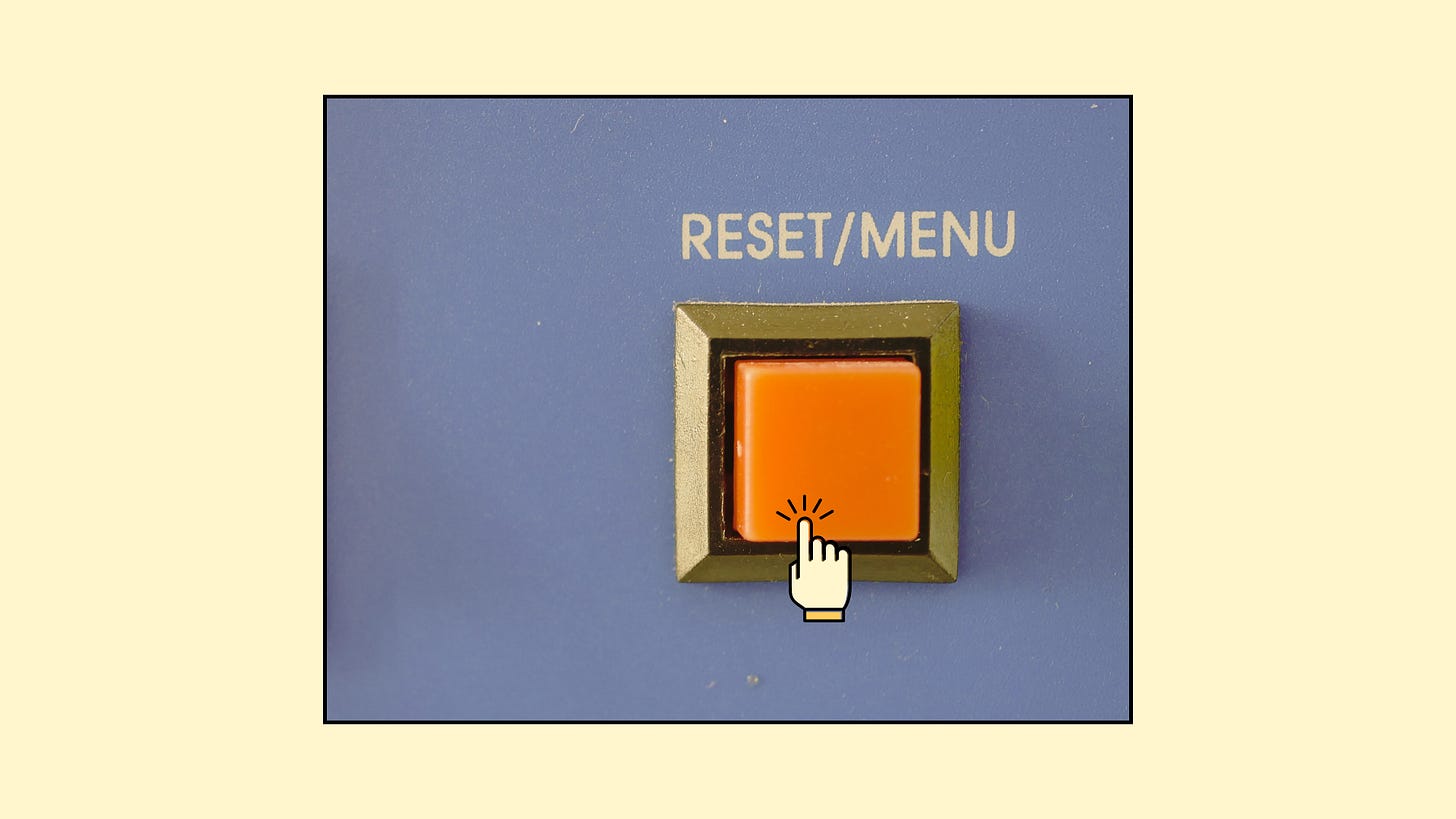There is a world where we work very hard and we make the time to reset.
—
Having a ‘reset button’ creates a space to be curious. It enables you to take an inventory of things at that moment, and to direct efforts toward the course ahead.
There are tons of ways to reset. Often, we reset without consciously realizing. Whether it’s an in-the-moment tool like a tactile cue to focus on the task at hand, or a formal tool used in a dedicated space such as a meditation, it all serves a purpose.
Sometimes, making the time to reset is:
Carving out 60 seconds from your day to be still
Going on a walk through your neighborhood solely to appreciate your surroundings
Reflecting on the day with appreciation for each accomplishment
Watching your favorite show
Listening to your favorite podcast
Playing video games with your friends
Spending time with your pet
Calling your friend
In the context of my work, it could look like:
Creating an attentional cue that brings your mind back to the present moment
I.e. doing a specific stretch to connect your mind and body
Listening to a specific song before you’re set to perform
I.e. playing Thunderstruck by ACDC on the way to your job interview
Taking a centering breath or engaging in a breathing exercise
I.e. a physiological sigh or color breathing cycle
Repeating a self-talk phrase that directs your focus
I.e. saying “back to it” to yourself to refocus
Tapping into your five senses
I.e. sensory grounding yourself by tapping into each sense that is being experienced individually in that moment, one at a time
—
My point: hitting the reset button is whatever you want it to be. Whether it’s an in-the-moment reset, or a full-on, formal reset; it’s on you to make your own version.
—
A key piece of this idea is to ensure that you make the time to put these mechanisms in place. This is where skillful and intentional action can be carried out to create these mental systems. A reset button permits a space where you can train your mind to make this a normal occurrence; to regularly allow yourself to reset.
“You do not rise to the level of your goals. You fall to the level of your systems.”
James Clear - sourced from his book Atomic Habits (p. 26)
In the process of reset, there is opportunity. There is a moment where you can choose your next moves and chart the course ahead. More on that next month. For now, I encourage you to hone in on two things:
Your “in-the-moment” reset button - your preferred attentional-redirection tool that can be conducted in a brief, momentary manner.
Your “full-on, formal” reset button - think of this more like a dedicated space, or a formal break of sorts. These questions can help you narrow it down:
What’s your happy place?
Where do you find the most joy?
Where are you most comfortable and content?
Bottom line
Building your own reset button can be fun. I like to have a few ‘in-the-moment’ techniques (cyclic sighing, a self-talk phrase, or a sensory grounding method) as well as a few ‘full-on, formal’ methods where I set aside time to be still and to tune in with my mind and body (taking a day or weekend to “be” instead of “do,” engaging in breathwork exercises and meditations, going on mindful walks, journaling, etc.). As with everything in mental skills training, make it yours.
—
If you’re open to it, share your reset button in the comments or via direct message. I’ve had athletes and performers come up with some really creative techniques, and I love to hear about more.
—
As always, thank you for reading and supporting my work.
—
Stay well,
☀️ Mike



i am going to make playing with and petting my cat my "reset button." she needs more attention and I need more resets!
This will make people think - we all must do this sub consciously or consciousy